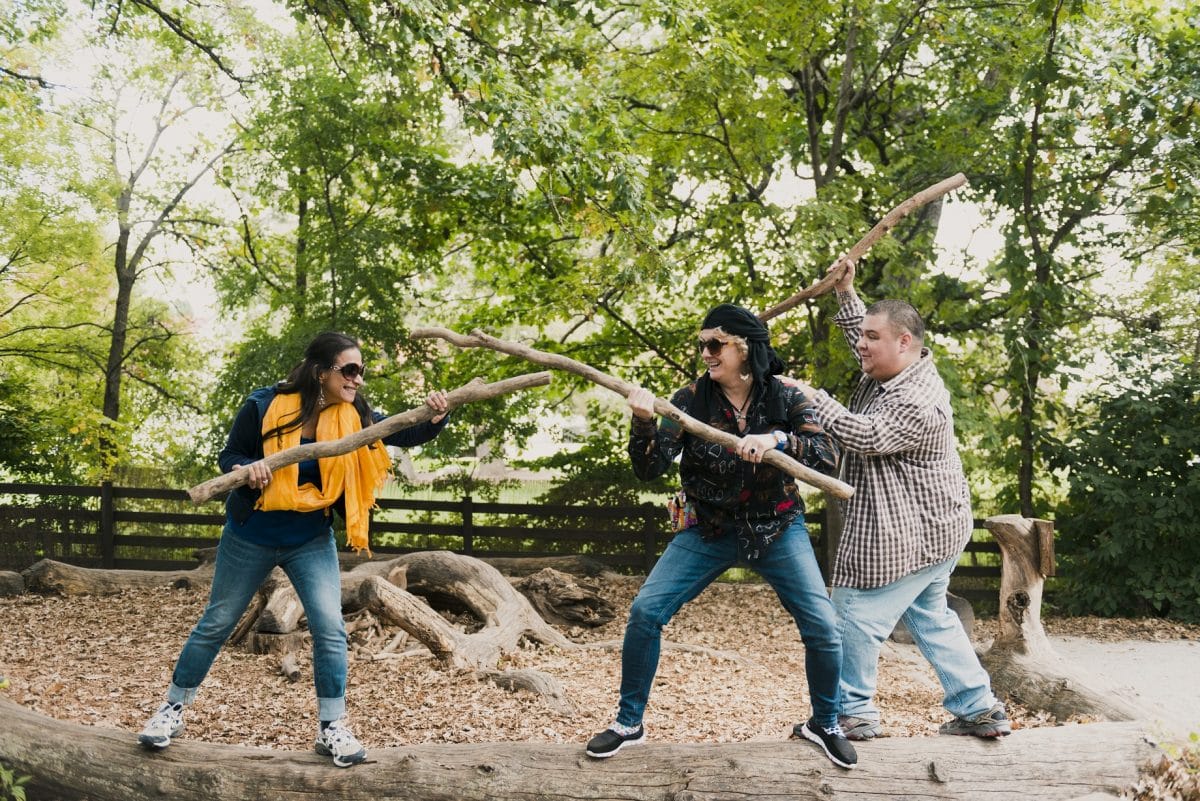No Teacher Left Indoors (part 2)

In January 2015 we met Beth Fryer, owner of the Teddy Bear Day Care and Preschool, of Traverse City, Michigan. Her colleagues from other day care and preschool sites never understood why Beth spent so much of her day outdoors with the children. At the time, her very large outdoor space had plastic toys, a playhouse, and cars. From that blog post: “Beth Fryer was accustomed to being marginalized by other preschool educators… She was considered “out there” for placing so much importance on outdoor play for her students.”
Then Beth discovered Nature Explore. She learned about the importance of natural materials, and removed most of the manufactured toys from the space. She learned that having clearly defined activity areas allowed children to better plan what they wanted to do outdoors, and better express their learning. In her work, she blends the Creative Curriculum and aspects of the Montessori approach with child-directed play.
Now, whole child learning is more visible at Teddy Bear. When her colleagues saw not just an outdoor space with toys, but an outdoor classroom, they came around. Objections to outdoor time turned into understanding and admiration. Beth is now invited to speak at professional conferences, and gives workshops. Local education students, prevented from interning there before, now value Teddy Bear for an internship.
Early Childhood Education (ECE) professionals certainly appreciate and foster learning through play. Yet many do not appreciate the specific benefits of play in nature. Like Beth Fryer’s colleagues working at other child care sites and preschools, many ECE professionals have never seen children learning outdoors as they do in Nature Explore Classrooms. Having only experienced traditional playgrounds, they’ve never seen a natural area designed to inspire learning.
The wide and comprehensive constellation of benefits of whole child learning that we see in our outdoor classrooms is rarely found in other environments. Physical exercise; fresh air; development of social skills, large and fine motor skills, close observation skills; boys and girls choosing to play together while learning concepts such as weight, volume, colors, and classification during hands-on manipulation of natural materials. Cross-discipline learning and simultaneous development of multiple skill areas is the norm in our Nature Explore Classrooms. This whole child learning supports and expands indoor learning.
To complement their indoor teaching skills, the ECE professional in the Nature Explore Classroom sees aspects of the indoor learning happening spontaneously in play, and, when appropriate, scaffolds that learning. And she wisely provokes learning, too. Beth Fryer placed a colorful set of measuring cups in her digging area. This led to work in measuring and dividing, math skills and science investigations, then extended into literacy—writing and reading words associated with their play. Learning exploded from the simple provocation of measuring cups in the digging area. This powerful whole child learning that happens constantly in a well-resourced outdoor classroom needs space, natural light, a variety of materials, and engaged adults.
In the best of both worlds, we can have a porous connection between the outdoors and indoors. Profound learning can happen anywhere and anytime a child is engaged with the world. We adults can savor, deepen and provoke this learning—indoors or out. Effective early childhood education professionals have mature teaching skills, yet their venue is usually indoors. We, and our children, need these talented professionals to bring their skills, empathy and passion outdoors.
We know that truly comprehensive early childhood education involves children engaging deeply with nature, not just playing in a playground. We saw Beth Fryer, phase-out predesigned toys, replacing them with natural materials. This simple action revealed to Beth, and to her skeptical peers, deeper levels of learning through nature.
How amazing would it be if all early education professionals understood and embraced learning in nature? How amazing would it be if these wise and experienced teachers brought their passion and skills outdoors?
We can all bring this day closer. We can engage our colleagues through conversations and professional education. We can introduce them to our Nature Explore Classrooms.
In ways large and small, we can all work to see that no teacher is left indoors. We’ll explore means of doing this in the next and final post in this series.
Read “No Teacher Left Indoors (Part 1)” here
Author’s Note: The new name for the series suggested by Beth Fryer.

